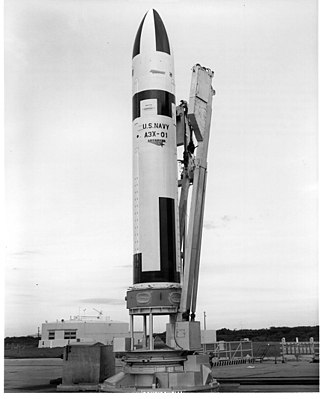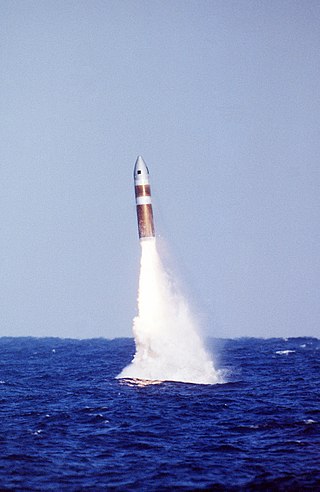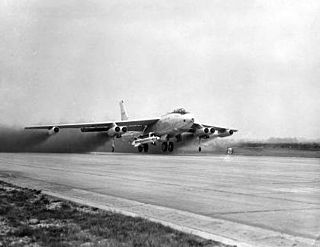
Common Missile was an intercontinental ballistic missile project, developed to satisfy U.S. Navy and U.S. Air Force operational system requirements for both SLBM and silo-launched ICBM, defined in the 1978 commonality study.

Common Missile was an intercontinental ballistic missile project, developed to satisfy U.S. Navy and U.S. Air Force operational system requirements for both SLBM and silo-launched ICBM, defined in the 1978 commonality study.
The Common Missile was designed as a four-stage solid propellant, stellar-inertial guided intercontinental ballistic missile capable of delivering up to six Mark 21 reentry vehicles to independent targets. It is propelled from a canister by a gas generator prior to first stage ignition. The post boost vehicle consists of a structure to house the guidance and solid propulsion systems and a platform to mount the reentry vehicles. The post boost vehicle provides the reentry vehicle spacing and deployment maneuvers. The basic dimensions, length, and diameter, were derived from submarine launcher volumetric constraints. The booster stages were sized to provide for Navy guidance access requirements at the II-III interstage and for at-sea maintenance access. The missile was designed to fill the current Trident submarine tube.

An intercontinental ballistic missile (ICBM) is a ballistic missile with a range greater than 5,500 kilometres (3,400 mi), primarily designed for nuclear weapons delivery. Conventional, chemical, and biological weapons can also be delivered with varying effectiveness, but have never been deployed on ICBMs. Most modern designs support multiple independently targetable reentry vehicle (MIRVs), allowing a single missile to carry several warheads, each of which can strike a different target. The United States, Russia, China, France, India, the United Kingdom, Israel, and North Korea are the only countries known to have operational ICBMs.

The UGM-27 Polaris missile was a two-stage solid-fueled nuclear-armed submarine-launched ballistic missile (SLBM). As the United States Navy's first SLBM, it served from 1961 to 1980.

The UGM-73 Poseidon missile was the second US Navy nuclear-armed submarine-launched ballistic missile (SLBM) system, powered by a two-stage solid-fuel rocket. It succeeded the UGM-27 Polaris beginning in 1972, bringing major advances in warheads and accuracy. It was followed by Trident I in 1979, and Trident II in 1990.

The Trident missile is a submarine-launched ballistic missile (SLBM) equipped with multiple independently targetable reentry vehicles (MIRV). Originally developed by Lockheed Missiles and Space Corporation, the missile is armed with thermonuclear warheads and is launched from nuclear-powered ballistic missile submarines (SSBNs). Trident missiles are carried by twelve United States Navy Ohio-class submarines, with American warheads, as well as four Royal Navy Vanguard-class submarines, with British warheads. The missile is named after the mythological trident of Neptune.

A ballistic missile (BM) is a type of missile that uses projectile motion to deliver warheads on a target. These weapons are powered only during relatively brief periods—most of the flight is unpowered. Ballistic missiles differs in range; short-range ballistic missiles (SRBM) stay within the Earth's atmosphere, while intercontinental ballistic missiles (ICBM) are launched on a sub-orbital flight. They are internally guided, those for short range are typically inertial-guided while those for long range typically have more sophisticated guidance.

The LGM-30 Minuteman is an American land-based intercontinental ballistic missile (ICBM) in service with the Air Force Global Strike Command. As of 2024, the LGM-30G is the only land-based ICBM in service in the United States and represents the land leg of the U.S. nuclear triad, along with the Trident II submarine-launched ballistic missile (SLBM) and nuclear weapons carried by long-range strategic bombers.

A submarine-launched ballistic missile (SLBM) is a ballistic missile capable of being launched from submarines. Modern variants usually deliver multiple independently targetable reentry vehicles (MIRVs), each of which carries a nuclear warhead and allows a single launched missile to strike several targets. Submarine-launched ballistic missiles operate in a different way from submarine-launched cruise missiles.

The R-39 Rif was a submarine-launched ballistic missile (SLBM) that served with the Soviet Navy from its introduction in 1983 until 1991, after which it served with the Russian Navy until 2004. The missile had GRAU indices of 3M65, 3M20, and 3R65. It was carried on board Typhoon-class submarines.

The UGM-133A Trident II, or Trident D5 is a submarine-launched ballistic missile (SLBM), built by Lockheed Martin Space in Sunnyvale, California, and deployed with the United States and Royal Navy. It was first deployed in March 1990, and remains in service. The Trident II Strategic Weapons System is an improved SLBM with greater accuracy, payload, and range than the earlier Trident C-4. It is a key element of the U.S. strategic nuclear triad and strengthens U.S. strategic deterrence. The Trident II is considered to be a durable sea-based system capable of engaging many targets. It has payload flexibility that can accommodate various treaty requirements, such as New START. The Trident II's increased payload allows nuclear deterrence to be accomplished with fewer submarines, and its high accuracy—approaching that of land-based missiles—enables it to be used as a first strike weapon.

The North American SM-64 Navaho was a supersonic intercontinental cruise missile project built by North American Aviation (NAA). The final design was capable of delivering a nuclear weapon to the USSR from bases within the US, while cruising at Mach 3 at 60,000 feet (18,000 m) altitude. The missile is named after the Navajo Nation.
Lockheed Martin Space is one of the four major business divisions of Lockheed Martin. It has its headquarters in Littleton, Colorado, with additional sites in Valley Forge, Pennsylvania; Sunnyvale, California; Santa Cruz, California; Huntsville, Alabama; and elsewhere in the United States and United Kingdom. The division currently employs about 20,000 people, and its most notable products are commercial and military satellites, space probes, missile defense systems, NASA's Orion spacecraft, and the Space Shuttle external tank.

Nuclear weapons delivery is the technology and systems used to place a nuclear weapon at the position of detonation, on or near its target. Several methods have been developed to carry out this task.

The W62 was an American thermonuclear warhead designed in the 1960s and manufactured from March 1970 to June 1976. Used on some Minuteman III ICBMs, it was partially replaced by the W78 starting in December 1979, and fully replaced by W87 warheads removed from MX Peacekeeper missiles and retired in 2010.

The Dong Feng 31 is a third-generation long-range, road-mobile, three stage, solid-fuel rocket intercontinental ballistic missile (ICBM) in the Dongfeng missile series developed by the People's Republic of China. It is designed to carry a single 1-megaton thermonuclear weapon. It is a land-based variant of the submarine-launched JL-2. It is operated by the Second Artillery Corps (SAC) which, in 2009, was estimated to have under 15 DF-31 missiles and under 15 DF-31A missiles in inventory. US Air Force National Air and Space Intelligence Center estimates that as of June 2017, five to ten Mod 1 and over fifteen Mod 2 launchers were operationally deployed.
The ZBGM-75 Advanced Intercontinental Ballistic Missile, also known as Weapons System 120A (WS-120A), was a program to develop an intercontinental ballistic missile (ICBM), proposed by the United States Air Force in the 1960s as a replacement for the LGM-30 Minuteman as the Air Force's standard ICBM. Funding was not allocated for the program and the project was cancelled in 1967.

The Alpha Draco missile, also known as Weapons System 199D (WS-199D), was an experimental ballistic missile developed by McDonnell Aircraft in the late 1950s to investigate the aerodynamic physics of the boost-glide reentry trajectory. Three test flights were conducted in 1959, of which two were successful.

Weapons System 199 (WS-199) was a weapons development program conducted by the United States Air Force to research and develop new strategic weapons systems for Strategic Air Command. Two air-launched and one ground-launched vehicles were developed as part of the program. While none entered production, they assisted in the development of both the GAM-87 Skybolt air-launched ballistic missile and that of re-entry vehicles for ballistic missiles.

The K family of missiles, is a family of submarine-launched ballistic missiles (SLBM) developed by India to boost its second strike abilities and thus augment its nuclear deterrence. Information about this family of missiles has mostly been kept classified. It is reported that 'K missiles' are faster, lighter and stealthier than their Agni missile counterparts. High Energy Materials Research Laboratory (HEMRL) developed a new formulation of composite propellant that is more efficient and provide greater thrust compare to Agni missile series. The objective behind the development is to make K missile family faster and lighter without compromising on operational range.

Non-ballistic atmospheric entry is a class of atmospheric entry trajectories that follow a non-ballistic trajectory by employing aerodynamic lift in the high upper atmosphere. It includes trajectories such as skip and glide.